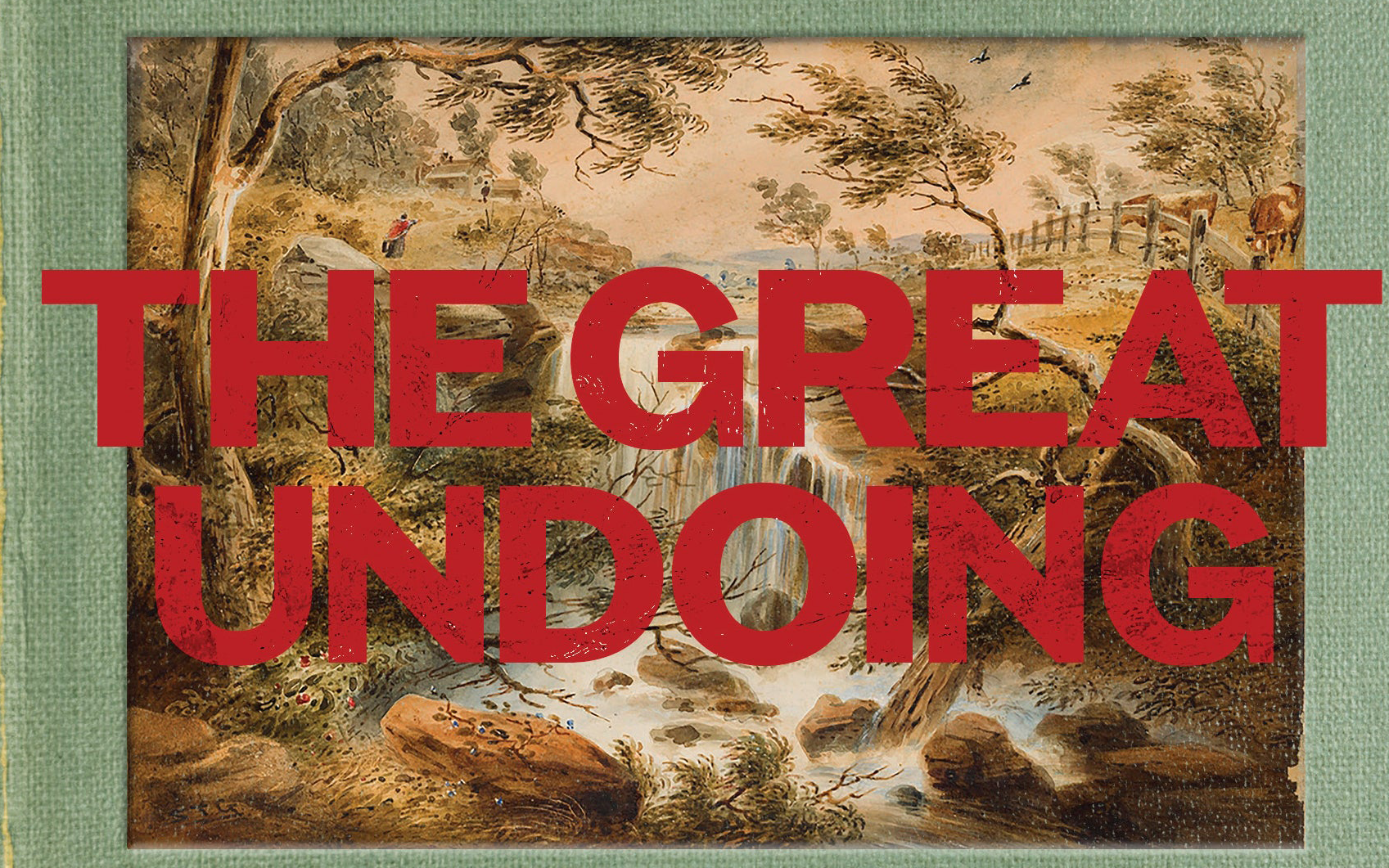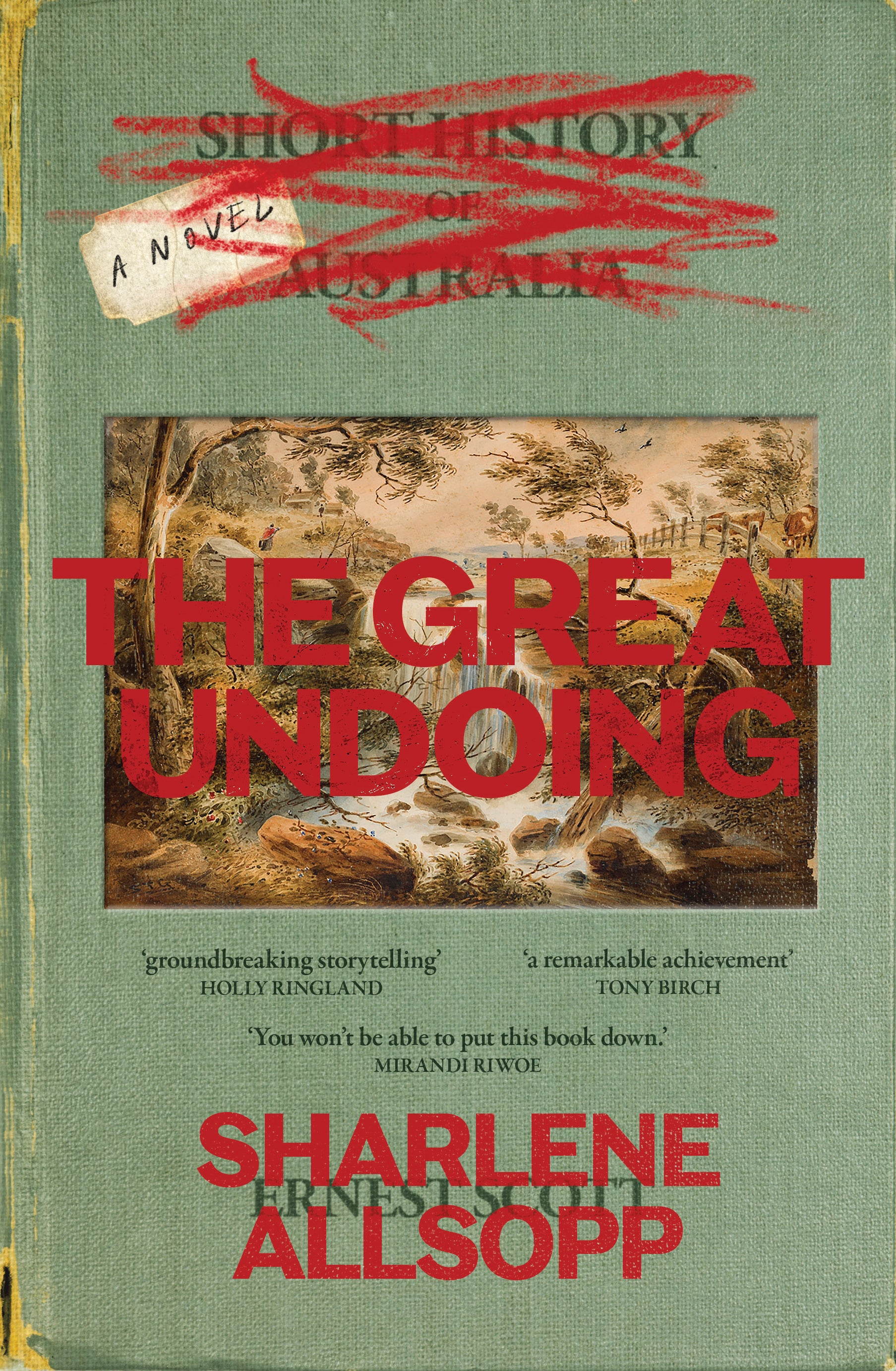
- Free Article: No
- Contents Category: Fiction
- Review Article: Yes
- Article Title: Transfiguring the world
- Article Subtitle: Sharlene Allsopp’s impressive début
- Online Only: No
- Custom Highlight Text:
Over the past two decades, novelists such as Alexis Wright, Kim Scott, and Ellen van Neerven have produced a body of work that not only unflinchingly explores the reality of Indigenous experience, but in many cases revisions the boundaries of the novel altogether, dissolving the strictures of conventional realism to give shape to Indigenous notions of temporality and relationship with Country.
- Featured Image (400px * 250px):

- Alt Tag (Featured Image): James Bradley reviews ‘The Great Undoing’ by Sharlene Allsopp
- Book 1 Title: The Great Undoing
- Book 1 Biblio: Ultimo Press, $34.99 pb, 304 pp
- Book 1 Cover Small (400 x 600):

- Book 1 Cover (800 x 1200):

The other innovation is legal and cultural. Following the election of its first Indigenous prime minister, Australia, by then ‘the only Treaty-less colonial nation on Earth’, entered into a legal relationship with its First Nations. Central to this new arrangement was Truth-Telling, a formal process designed to dismantle the lies Australia was founded upon. The goal of Truth-Telling is to allow space for complexity by actively cultivating ‘multiple-voiced accounts of the same historical events’, thus embodying a recognition that the truth is not unitary, but is instead ‘found in the layers, the many voices’.
The narrator, Scarlet Friday, is a Truth-Teller. A Bundjalung woman and historian, she has devoted her professional life to unpicking the lies contained in official records and documents, and filling in the gaps around them. After travelling to London as part of a project to recognise the experiences of Indigenous military personnel, she stumbles upon records relating to her great-grandfather, William, and realises that her own family history is filled with elisions and silences.
Scarlet’s need to understand the truth of William’s life, and by extension of her own, affects her deeply. As she observes at one point, ‘I didn’t care as much about Truth-Telling when it was just a grand idea. Before I discovered it how personal it was. Before the truth began to dismantle me.’ Her investigations are interrupted when the Bloodtalk network suddenly collapses and she is forced to embark on a perilous odyssey home to Australia.
In the ensuing chaos, global society unravels. With the financial systems upon which they rely abruptly gone, economies collapse almost overnight, leading to civil unrest and violence. Simultaneously, borders and the question of belonging, rendered almost obsolete by Bloodtalk, reassert themselves, leading to mass expulsions and attacks upon those who are now seen as outsiders.
In recent years increasing numbers of Indigenous writers here and overseas have deployed the tools of science fiction and the fantastic to explore questions of dispossessions and cultural survival. As in Claire G. Coleman’s Terra Nullius (2017), the use of these elements in The Great Undoing creates a fertile creative estrangement, revealing the ways in which stories about blood and the use of surveillance have been used to silence other voices. But like Alexis Wright’s The Swan Book (2013), they also provoke a collision between the apparatus of modernity and Indigenous ways of being, starkly illustrating the destructiveness of the former and giving shape to the enduring nature of the latter.
Simultaneously, the novel incorporates the questions about veracity and historical truth that are at its heart into its structure. As Scarlet travels home, she records her experiences in the pages of a faded copy of Ernest Scott’s A Short History of Australia (1916), whose preface declares that it ‘begins with a blank space on the map, and ends with the record of a new name on the map’. Scarlet’s overwriting takes the act of erasure implicit in this statement and quite literally fills in the blanks, transforming the volume into the physical embodiment of Truth-Telling.
This sense of the protean unreliability of language and its relationship to truth and power is amplified by Scarlet’s addition of footnotes defining or debating words and phrases. After all, ‘when a nation is built on a lie, how can any version of its history be true?’
Similarly the book’s narrative, which moves restlessly back and forth in time and place, and interleaves passages and quotes from other documents, complicates the ideas of linear time and progress upon which colonial Australia is built. Instead, it suggests a way of understanding in which past, present, and future are not separate, but overlapping and interconnected. No less importantly, it makes it clear that the effects of violence and trauma are not confined to their moment, but instead ripple on through time.
Perhaps the most remarkable aspect of The Great Undoing is that its refusal to look away from deceit and brutality is matched by a desire to make space for new stories. This is visible in Scarlet’s references to writers ranging from Oodgeroo Noonuccal to Ali Smith, a device that is simultaneously an act of authorial generosity and a way of asserting a literary genealogy that opens up new kinds of storytelling. This expansiveness is also present in its embrace of open-endedness and complexity – or, as Scarlet asks, ‘Why are we so fixated on finding the answer? Answer is an end. It’s the questions that hold the living. We rush through the story, we skim so many previous sentences, hurrying to the plot resolution. But when we are between the covers we are still part of the story. We belong.’


Comments powered by CComment